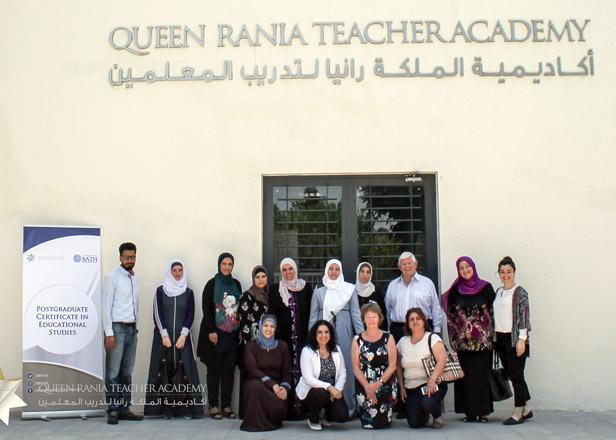You are here
Online teachers face real challenges in virtual classrooms
By The Columbus Dispatch, Ohio (TNS) - Jan 08,2020 - Last updated at Jan 08,2020

Photo courtesy of wordpress.com
The fourth-graders gathered for a lesson on division, listening as math teacher Mindy Pyle talked them through a word problem.
One child used a whiteboard to demonstrate how to divvy up a pile of pencils equally. Students discussed which multiple-choice answer was correct and why.
It happened from different places across Ohio, using computer programmes, instant messaging and webcam video. The students attend Ohio Connections Academy, a statewide, virtual K-12 school, which means they don’t meet Pyle or any other teachers face-to-face.
“Anything you do in a traditional classroom, you can do in this environment — it just looks a little different,” said Pyle, 37, who lives in Sunbury and has taught for the school since 2006. This year, she intervenes with students who need extra help with math, either working from her home or at an academy office near Worthington.
Ohio does not require additional certifications or requirements beyond a valid teaching license for those who teach in e-schools.
Although online education is still somewhat rare, experts say it’s a possibility that teachers should be exposed to — especially as more traditional brick-and-mortar schools adopt a “blended learning” curriculum that uses both online and face-to-face instruction.
Often, learning how to use technology is a small part of effectively training teachers for an online environment, said Christopher Harrington, director of the Michigan Virtual Learning Research Institute. Rather, the focus should be on how to manage online classrooms, connect with students who are not physically present, and curate content that resonates with them.
Ohio has 984 teachers employed in what the state Education Department calls e-schools, according to 2019 data. More than 24,000 students are enrolled in 14 schools, nine of which are dropout-and-recovery schools for struggling students.
In comparison, more than 100,000 teachers are employed in about 3,000 traditional public schools that have about 1.6 million students.
Pyle, like many other online teachers, had to learn mostly on the job, she said. But more Ohio colleges and universities are finding ways to prepare future teachers for the possibility of leading a virtual classroom.
Cedarville University, in Greene County southwest of Columbus, has connected students with 23 mentor teachers from Ohio Connections Academy and Ohio Virtual Academy, another e-school, to learn about online education and observe their classrooms.
Many schools, including Ohio State University, offer courses on designing online curriculum. Others, including Ohio University, educate future teachers in online courses to familiarise them with the platform.
Miami University, which is in the Butler County city of Oxford north of Cincinnati, has 10 students tutoring third-graders at Ohio Connections Academy.
The academy offers K-12 education as part of a national network owned by the Pearson education company and is sponsored by the Ohio Council of Community Schools. It has 4,800 students and 163 teachers, making it the state’s second-largest e-school. Maumee-based Ohio Virtual Academy is about three times its size.
Both schools lend their students a laptop, but the students must use their own Internet connection.
Miami University education majors Emily Smith and Shivangi Padhy, who are 19-year-old sophomores, said tutoring online students weekly has exposed them to a learning environment that is personalised and flexible. They say it comes with challenges, though, particularly connecting with students and keeping them engaged.
Padhy laughed as she described a distracted girl performing gymnastics while on her webcam. The two said they’ve learned that lesson-planning and frequently communicating with families are important in keeping kids on track.
In contrast, Anna Ridenour, 26, an Ohio Connections Academy graduate, said most of her preparation for being an online teacher was being an online student. She returned to her alma mater in 2015 for her first job and is now the school’s state testing coordinator. She lives near Cincinnati.
In 2016, just 3.5 per cent of US teacher education programmes had virtual field experiences like Miami’s, according to a study cited by the Michigan Virtual Learning Research Institute.
Ridenour said of her university experience: “I think there was one PowerPoint slide that mentioned online schools existed.”
Richard Ferdig, a professor of learning technologies at Kent State University, said preparing teachers for virtual education might be moving slowly in much of Ohio because of how the state funds virtual schools. Although states such as Florida, Georgia and Michigan have large, state-run online schools, Ohio’s are typically commercial operations, so tax money moves with public school students if they choose to enrol in one. That competition causes tension.
One cautionary example is the Electronic Classroom of Tomorrow, or ECOT, once Ohio’s largest charter school. It had to repay the state millions of dollars for overstating its enrolment and, as a result, shut down.
Kui Xie, a researcher and learning technology professor at Ohio State, said she has found that the most significant factor in whether teachers use technology successfully is having a positive attitude.
“It’s not about age; it’s about values,” Xie said.
By Alissa Widman Neese
Related Articles
AMMAN — The Queen Rania Teacher Academy (QRTA) has partnered with the University of Bath to launch a pilot programme aimed at improving the
AMMAN — The Ministry of Education and Manaseer Group on Wednesday launched the first phase of “Noor Space”, a comprehensive e-school managem
AMMAN — Teachers in Jordan and the United States have “very similar” ideas, concerns and questions in regard to adopting critical and creati

















